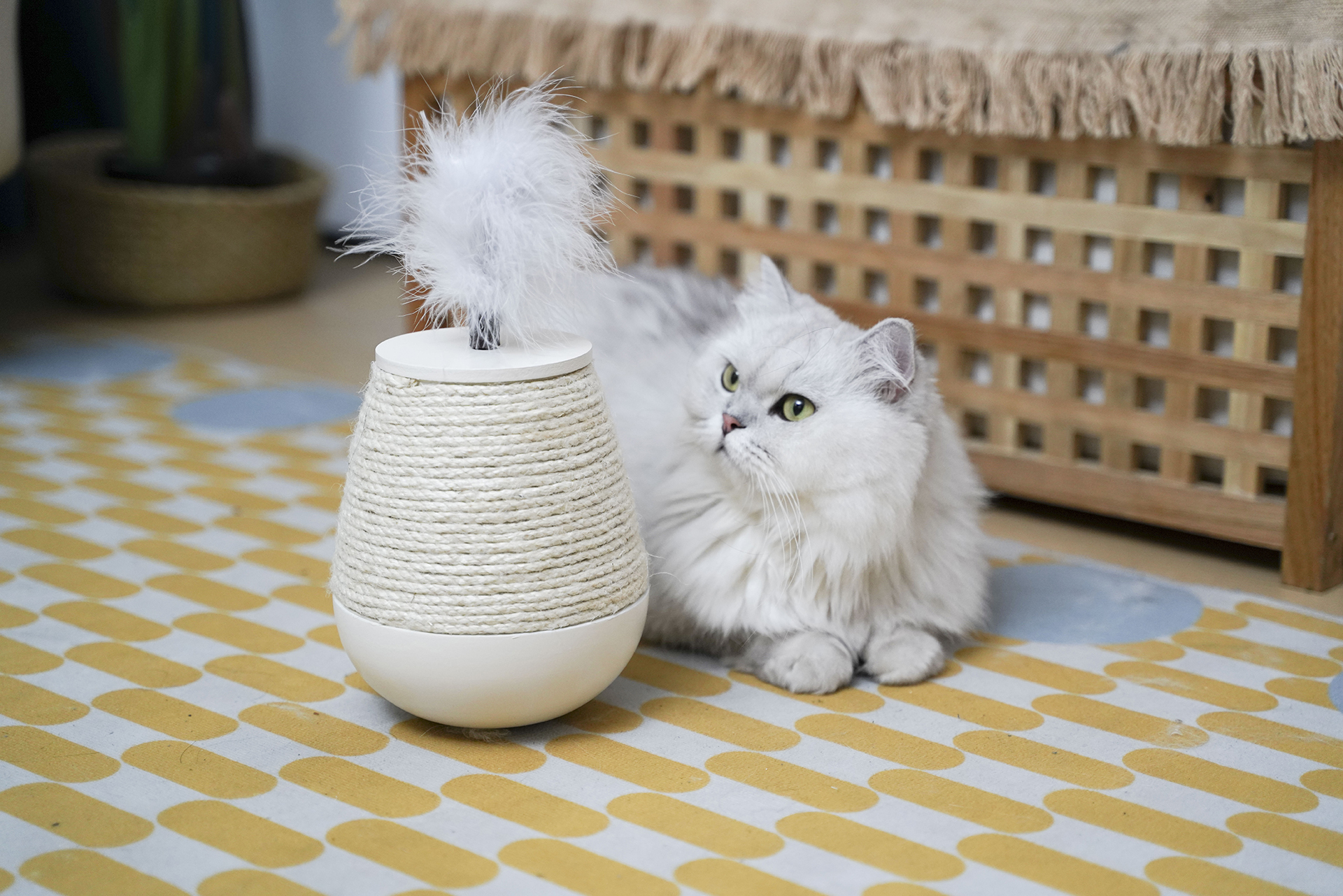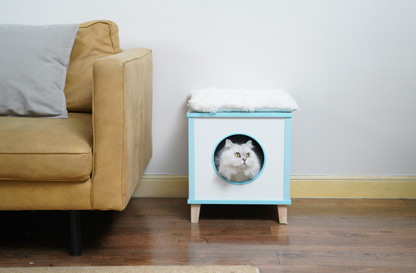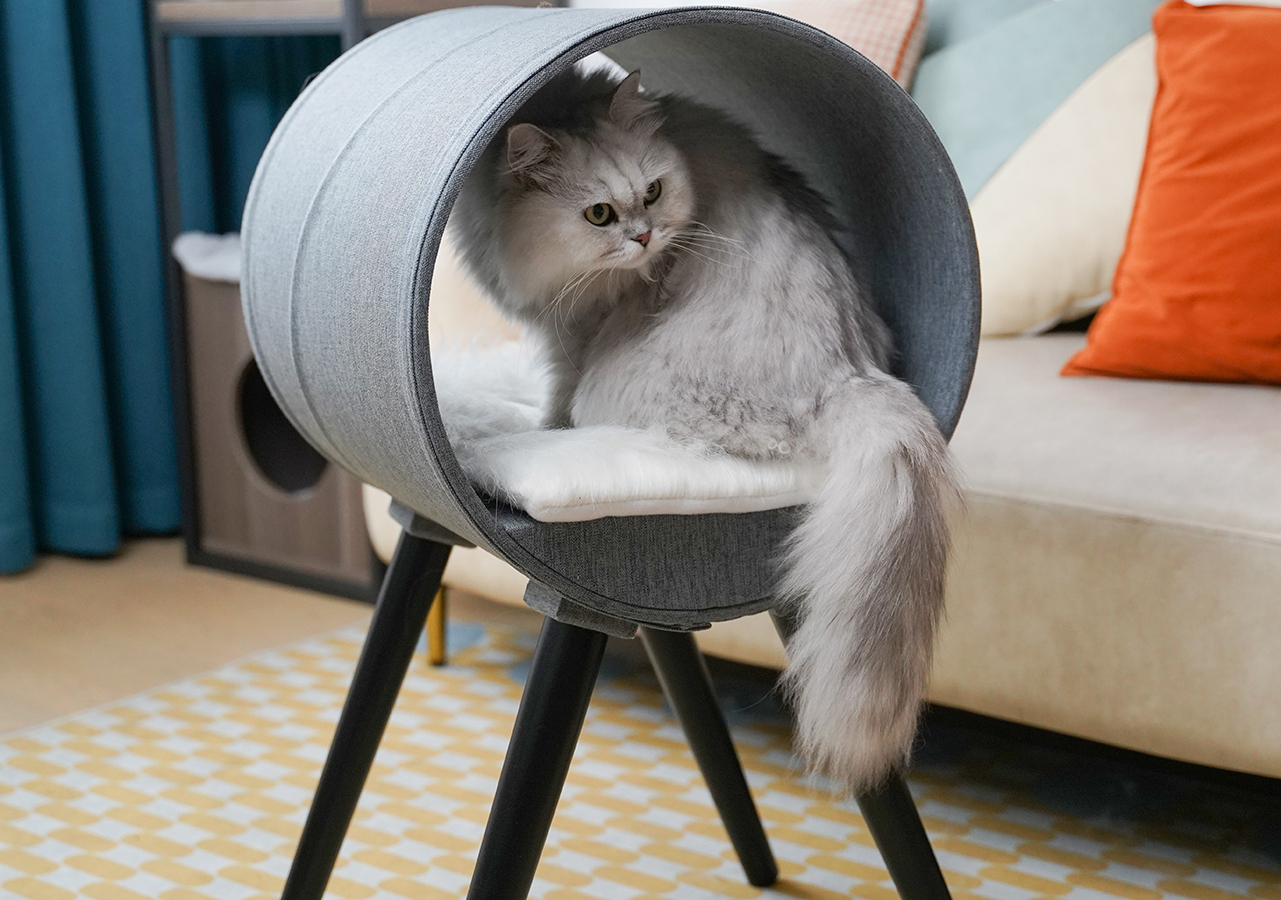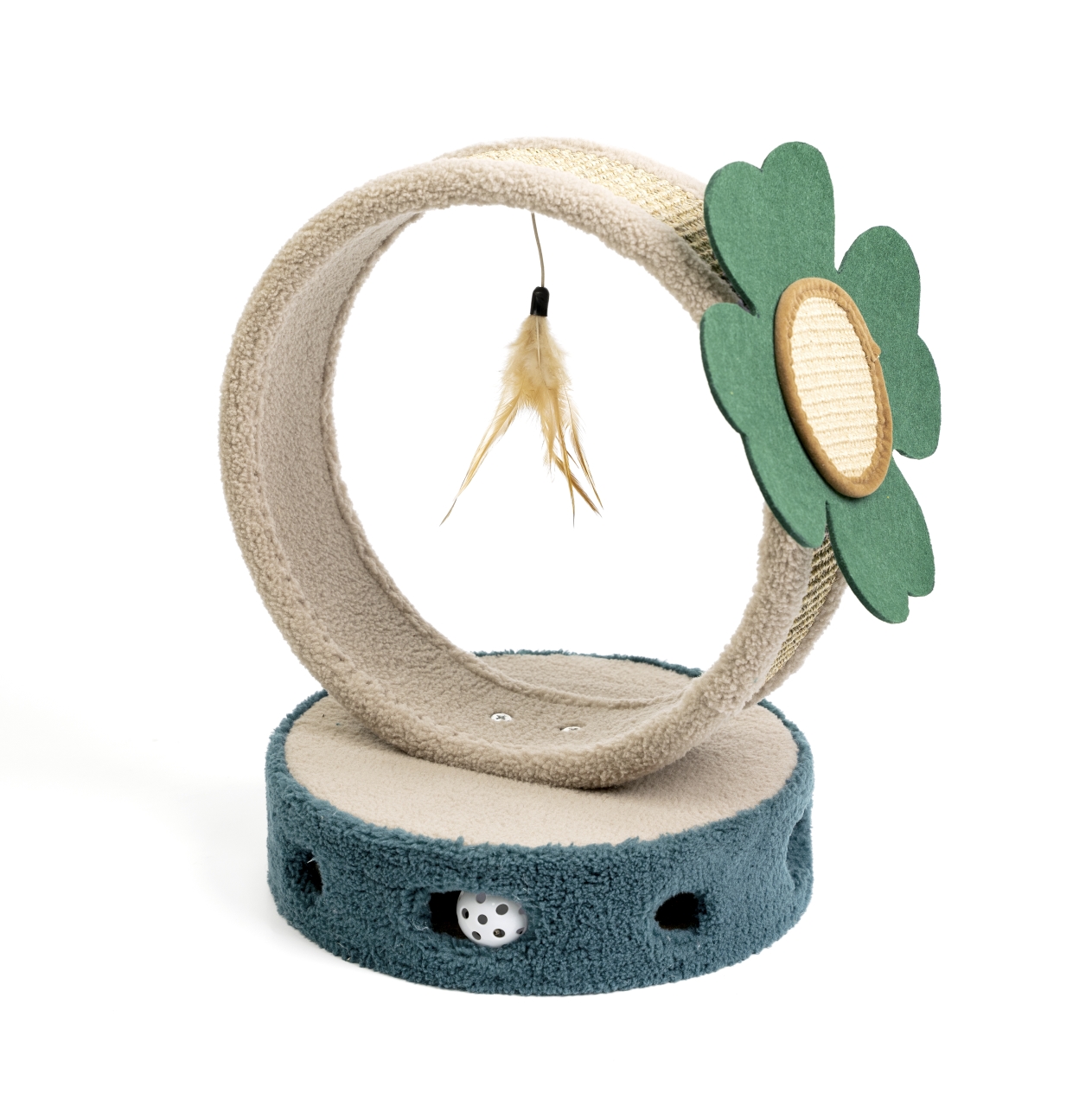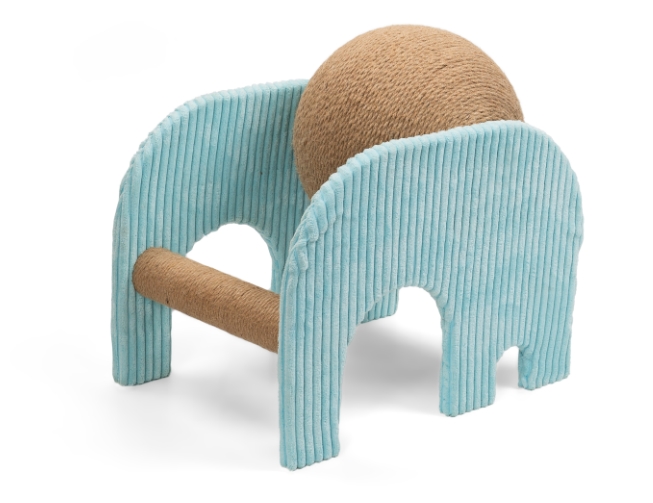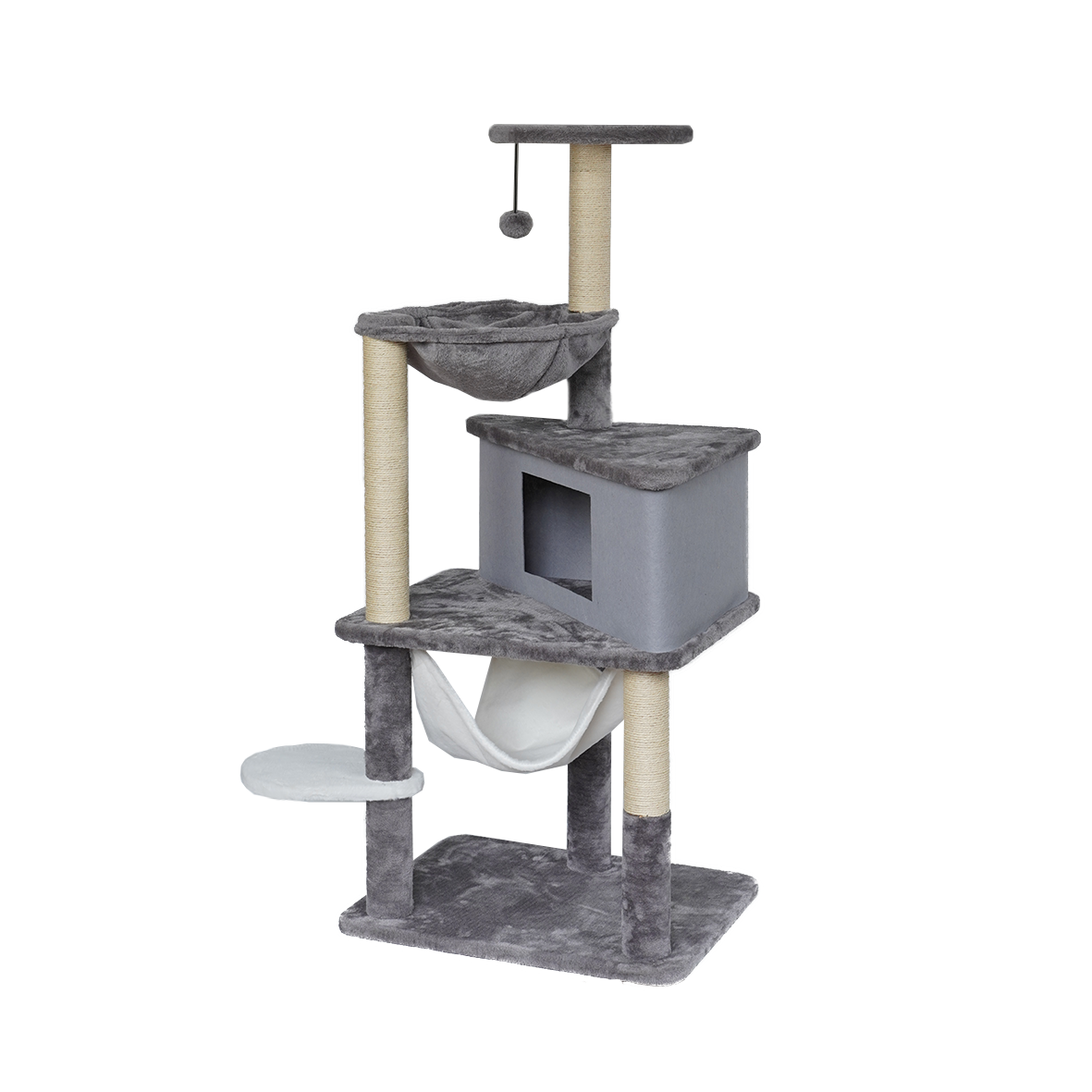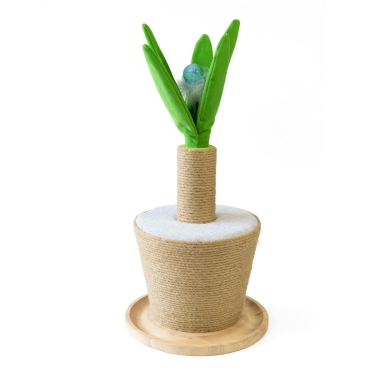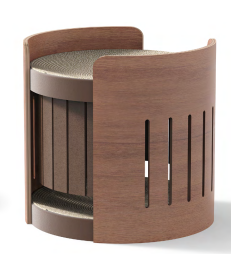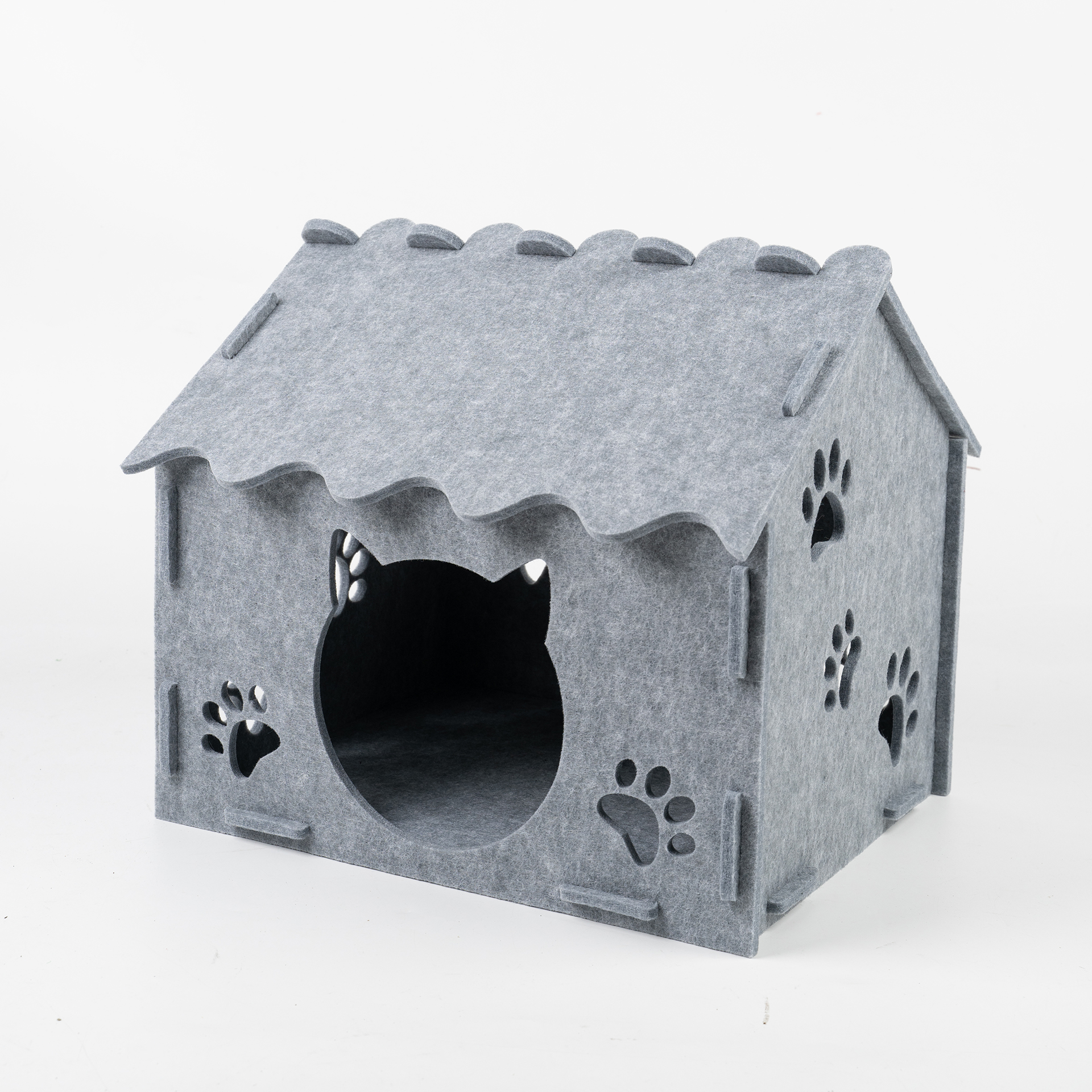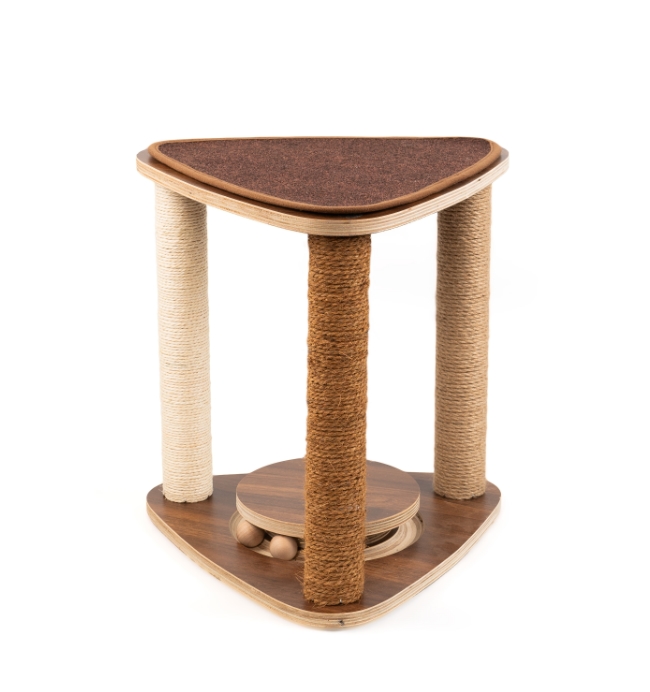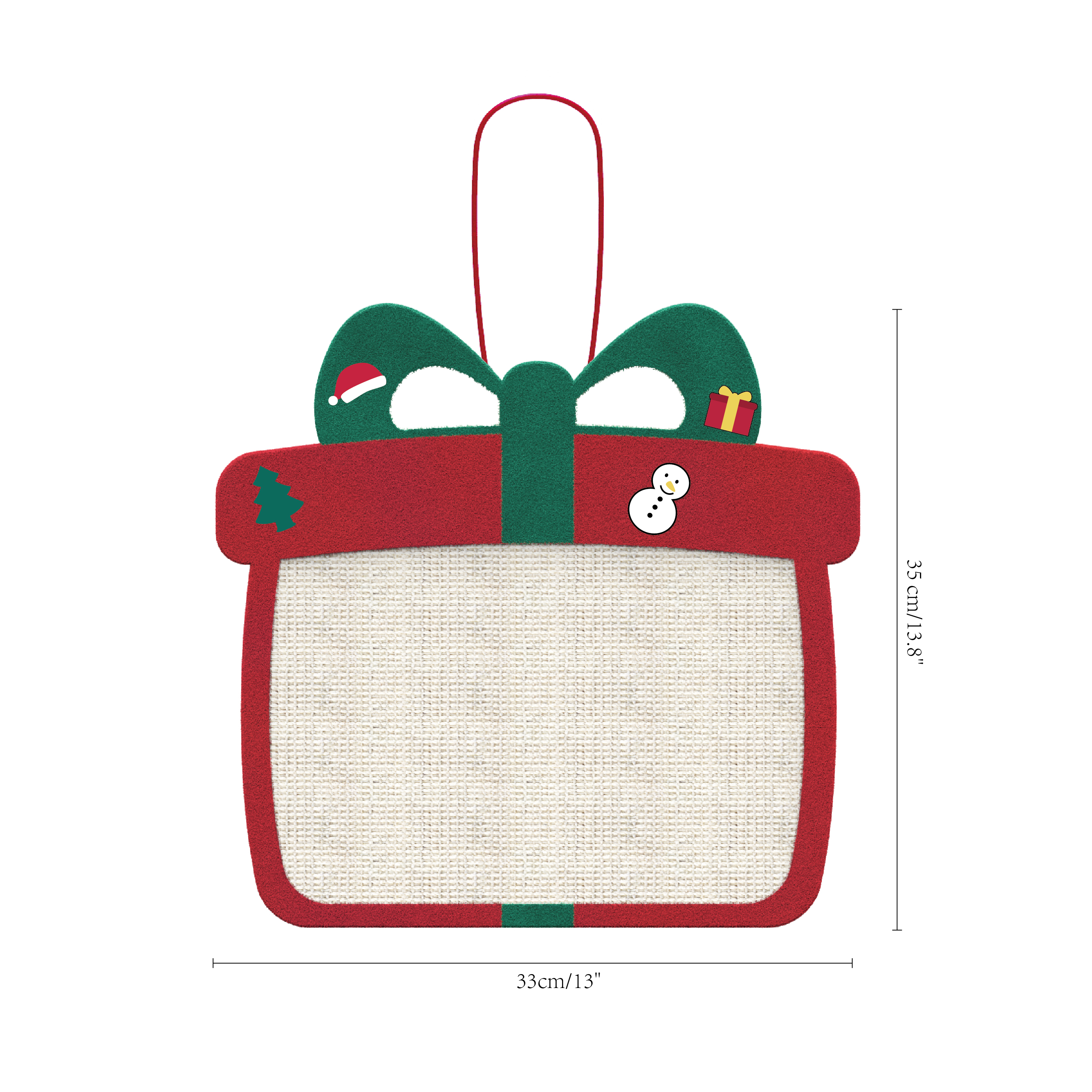Sentian Pet is based on natural materials, and its products are widely used in solid wood, sisal, seaweed, corn leaves and other environmentally friendly materials, which are deeply loved by customers and consumers.
Interactivity is a crucial aspect in cat toy design. It is directly related to the interactive experience between cats, toys and owners. By considering and integrating interactive elements, designers can create toys that are more engaging, fun, and stimulating for cats.
Interaction between owners and cats: Interactive design can encourage owners to more actively participate in cat games. Some toys are designed to allow owners to play with their cats, such as laser pointers, controllable remote control toys, etc. This design not only strengthens the emotional bond between the owner and the pet, but also provides the owner with the fun of participating in the cat's activities.
Multi-cat family interaction: For multi-cat families, interactive design can promote better cooperative play among cats. For example, designing an interactive toy that can be used by multiple cats can enhance social interaction between them and alleviate the loneliness of a single-cat household.
Simulate real hunting experience: The interactive design can better simulate the natural hunting instinct of cats. By using laser dots, small objects that can be chased, or toys that simulate small animals, designers can stimulate cats’ desire to hunt and provide a richer interactive experience.
Stimulate thinking and intelligence: Interactive design helps stimulate your cat’s thinking and intelligence. Some interactive toys that require cats to think and solve problems, such as intelligence balls, toys with hidden food, etc., can keep cats alert during play and improve their IQ.
Moderate stimulation: Interactive design also needs to pay attention to the moderation of stimulation. Overly intense stimulation may cause anxiety or fatigue in cats, so the intensity and frequency of stimulation need to be considered in the design to keep play enjoyable and healthy.
Guide cats to exercise: Interactive design helps guide cats to do more exercises. For example, some toys equipped with sound or luminous elements can attract cats to actively chase and run, prompting them to be more active in physical exercise.
Acoustic and visual stimulation: By adding acoustic and visual stimulation elements, such as a ball that makes a sound or a toy with a flashing light, you can increase the appeal of the toy and make it easier for your cat to be attracted and maintain interest.
Variability and freshness: Interactive design needs to consider how to keep the toy fresh. Designers can add changeable elements, such as replaceable accessories, shape-adjustable structures, etc., to make cats less likely to feel bored after long-term use.








 English
English 中文简体
中文简体 Deutsch
Deutsch